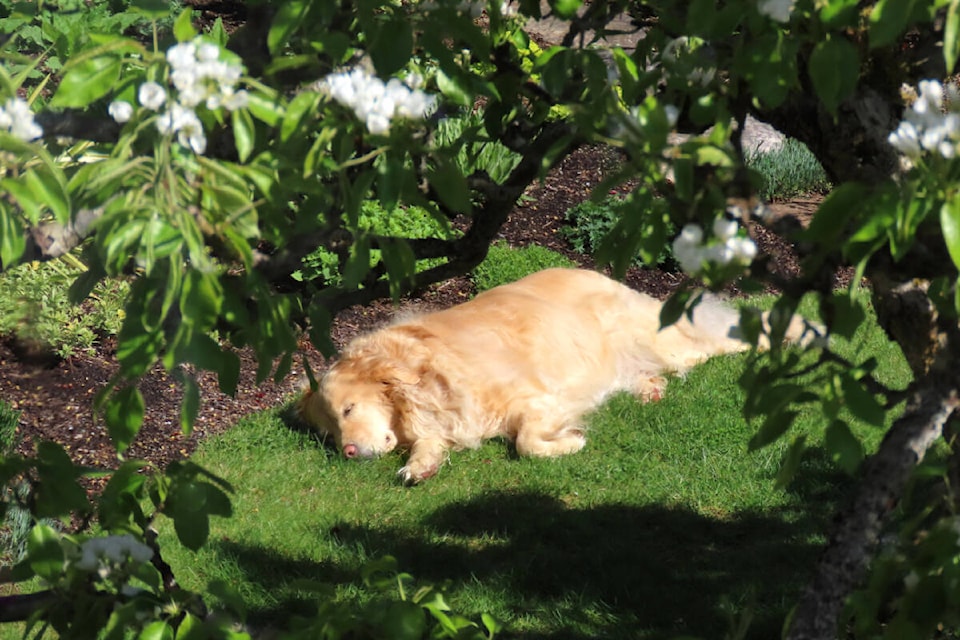By Leslie Cox
Special to the Record
Anyone else noticing some distinct winter weather similarities to December 2021?
Remember the snow stuck around through February and into March? Heck, the March winds blew into April, producing frost most mornings, a couple of snowfalls and three days with hail. As late as April 26, in fact.
That is not to say there were not signs of spring struggling to be noticed in their appropriate time frame. I mentioned sightings of my primulas valiantly sending out their blossoms, in spite of the frost and snow. And a few bumblebees were spotted in early-blooming crocuses.
Thinking back though, I remember seeing more honeybees than bumblebees in our garden when the weather was warming up. Strange phenomenon. Woolly bodies mean bumblebees are better prepared to handle inclement spring weather. So, where were they in spring 2022? Could the 332 mm (13.3 in) of rain, some early frosts, and a rare weather bomb cyclone in October 2021 have impacted on the survival of the overwintering queen bumblebees? Who knows?
In April, Parliament proclaimed 2022 as Year of the Garden to celebrate 100 years of Canada’s ornamental horticultural sectors. Across Canada, people were encouraged to experience gardening life… although it was slow to catch on initially, due to the unseasonal Mayvember weather. Wasn’t that something?
Many gardeners in the Pacific Northwest bemoaned the poor seed germination and cold damage to young seedlings. On the upside, some pests did not like the cold either. Azalea sawflies certainly did not appear on schedule and when they finally did, the numbers were lower. In our garden, at least.
By June, the American bullfrog hunting season had opened with the capture of three juveniles in our pond. This has become an annual event due to the many Black Creek feeder tributaries running through the three farms behind us, as well as the five irrigation ponds scattered on said farms. All this water supports a healthy bullfrog reproduction population. Needless to say, migration is almost mandatory if mating is to occur.
June also produced another phenomenon event in the garden… multiple numbers of mermithids appearing in groups on a couple of plants. John dubbed them “spiral gyras” and accused them of chewing his flowers. No can do as they are endoparasites which typically live in the soil and prey on arthropod species. I bet the rain likely drove them temporarily above ground.
Thankfully, the weather finally reverted to somewhat normal and our gardens burst into bloom to celebrate the Summer Solstice. Warmer temperatures did wonders for the vegetable garden and tiny pears and apples began to appear on our trees. Everywhere there were signs of growth and delightful floral scents.
Except for one black magic plant… the voodoo lily I inherited from a great-uncle’s garden. As magnificent as the single flower is, you do not want to linger too long as it smells like decaying flesh. Thankfully, the bloom lasts only a day or two.
July brought National Moth Week and an expose on cutworm moths in our garden. In August I wrote about the Citizen Science programs. One program, in particular, focuses on amassing the flora and fauna found in our B.C. provincial parks. Hikers and campers alike were encouraged to submit their photos and info to naturechallenge.ca.
Fall’s arrival meant harvesting was ongoing and a start on garden cleanup. Always a good time to make necessary landscape changes and divide any overgrown plants.
Then suddenly, the weather deteriorates and you suddenly discover some unwanted stinky house tenants.
Ah, 2022. Another year for the garden history book.
